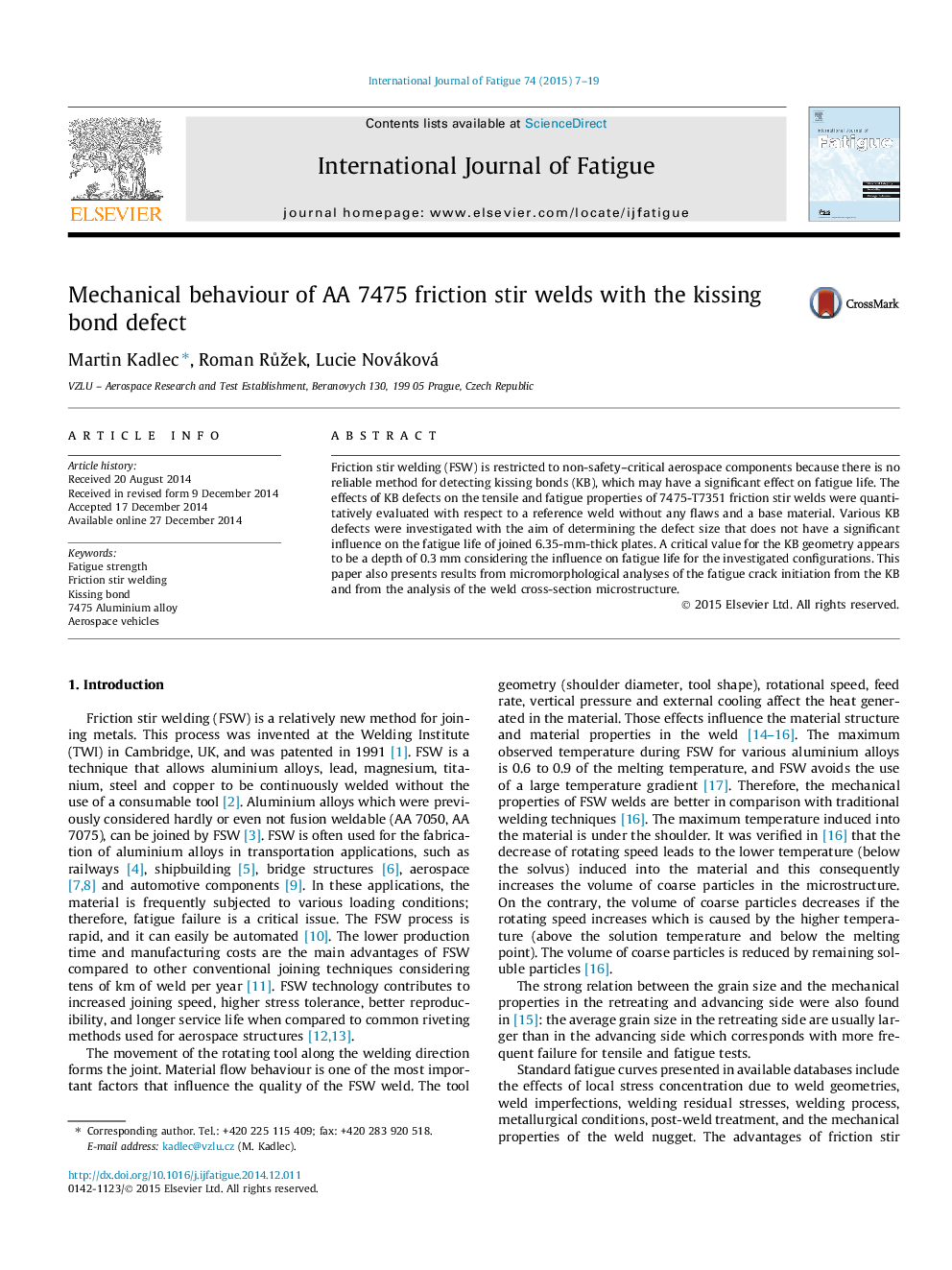| Article ID | Journal | Published Year | Pages | File Type |
|---|---|---|---|---|
| 776655 | International Journal of Fatigue | 2015 | 13 Pages |
•A kissing bond size of 315 μm was insignificant considering the fatigue behaviour.•The 670 μm kissing bond decreased the fatigue life by 91% compared to base metal.•A new process of crack initiation from the kissing bond surface was observed.
Friction stir welding (FSW) is restricted to non-safety–critical aerospace components because there is no reliable method for detecting kissing bonds (KB), which may have a significant effect on fatigue life. The effects of KB defects on the tensile and fatigue properties of 7475-T7351 friction stir welds were quantitatively evaluated with respect to a reference weld without any flaws and a base material. Various KB defects were investigated with the aim of determining the defect size that does not have a significant influence on the fatigue life of joined 6.35-mm-thick plates. A critical value for the KB geometry appears to be a depth of 0.3 mm considering the influence on fatigue life for the investigated configurations. This paper also presents results from micromorphological analyses of the fatigue crack initiation from the KB and from the analysis of the weld cross-section microstructure.
